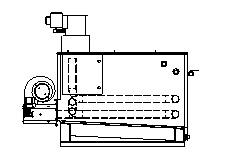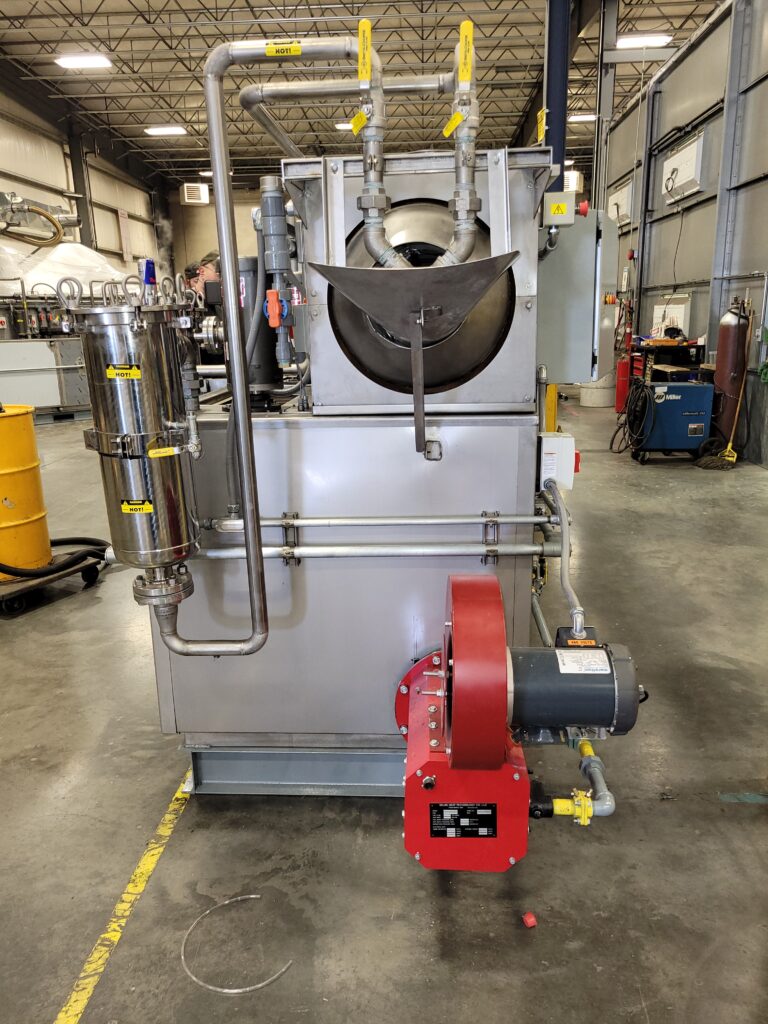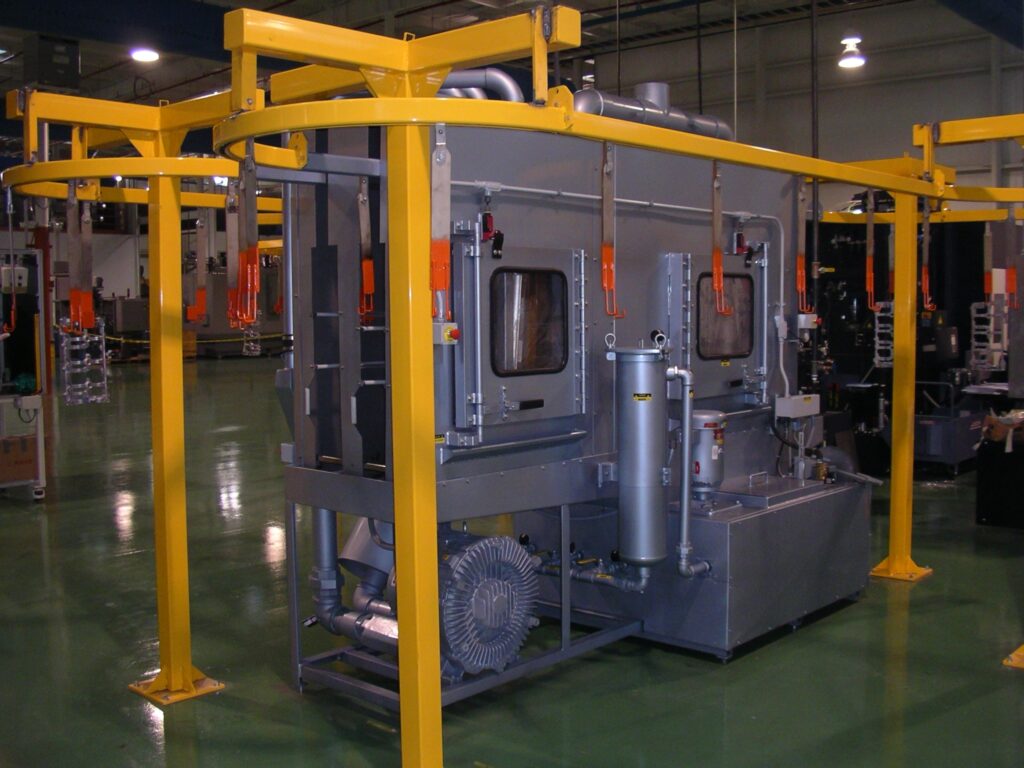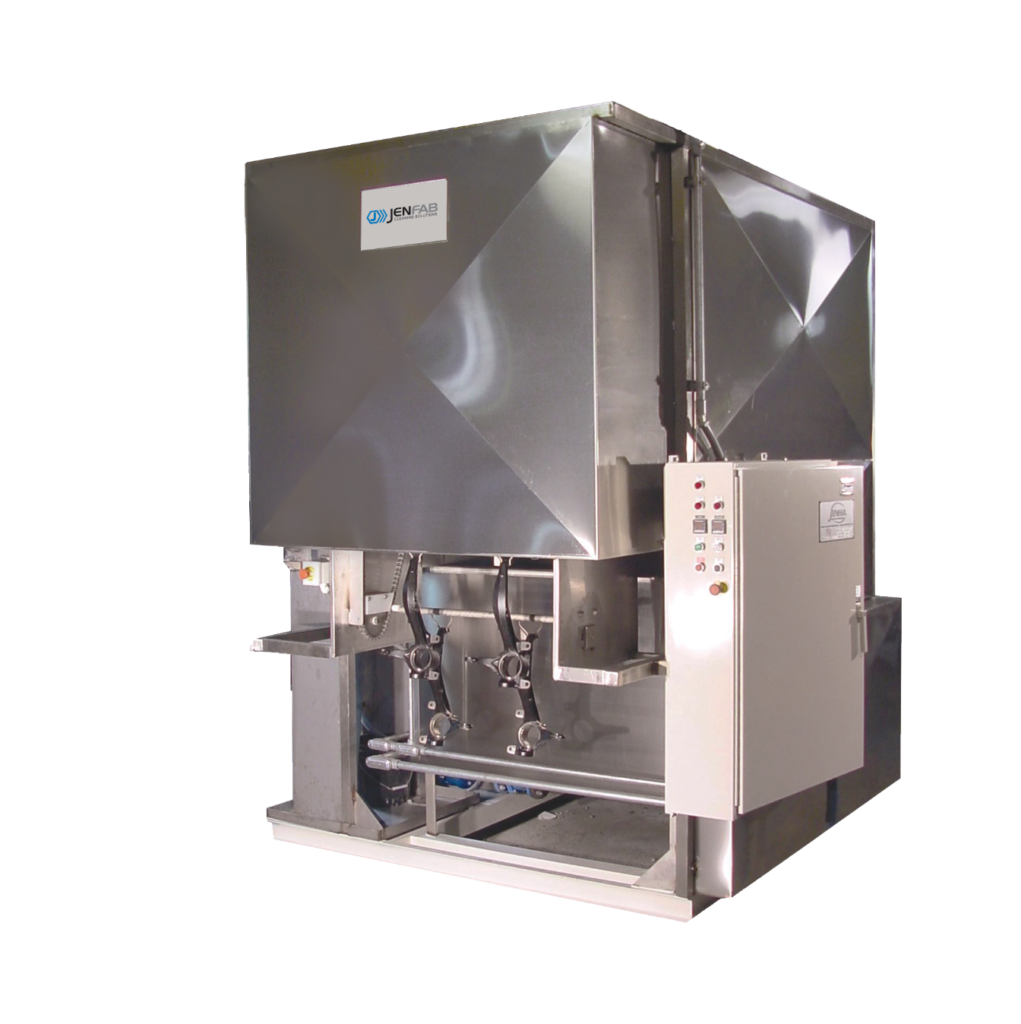When searching for a rotary basket washing system, finding the correct machine for your desired process can be difficult. A number of items factor into the equation (desired output, footprint, part size, cycle times, cleanliness specs), but the choice doesn’t have to be overwhelming. Understanding the similarities and differences of the two systems can go a long way in helping you make your decision.
At Jenfab Cleaning Solutions, we offer two styles of rotary basket units: the Lean Clean 360 series and the VAR (Vertical Agitation Rotation system). Both units implement submerged rotation in aqueous cleaning solution with optional ultrasonics, a process resulting in optimal precision cleaning when compared to traditional dip agitation. With rotary baskets, parts are rotated through the solution and particulates, soils and oils are removed from even the most difficult bends and blind holes. The rotation ensures nestled parts come into contact with the cleaning solution, which isn’t always the case when using dip agitation. The rotating action also cuts down cross-tank contamination drastically, as parts drain over one tank before moving on to the next stage.
While both the VAR and Lean Clean units revolve around these aqueous cleaning principles, the two systems differ greatly and offer unique advantages.
The Lean Clean 360 series is one of Jenfab’s staple lines. Ranging from the 360-1 (one basket system) to the 360-8 (eight basket system) the Lean Clean 360 features a favorable footprint, as small as 3’ 4” x 6’ on the 360-1, and maximizes on the benefits of “lean” manufacturing. The system features a favorable front opening door with a standard 42” load height, making loading and unloading an easy process for the operator.
Lean Clean 360’s come standard with wash and rinse zones, and a sleek and simplistic touch screen interface makes tailoring cycle times to your needs a simple task. During the wash and rinse stages, the basket continuously rotates as it is sprayed with solution from multiple directions. The chamber fills with solution at the same time, eventually submerging the basket. At the end of the wash cycle, the basket continues rotating and is allowed appropriate time to drain into the proper tank before changing to the rinse stage.
VAR systems are similar in theory but offer their own advantages and disadvantages when compared to the Lean Clean 360.
One of the biggest advantages of the VAR system is the ability to handle various basket sizes, giving it nearly endless customization possibilities when speaking of part sizes and dimensions. Whether it’s a standard wash-rinse cycle you are in search of or a five tank system with multiple washes and rinses, the VAR could be the right decision for you and your business.


















